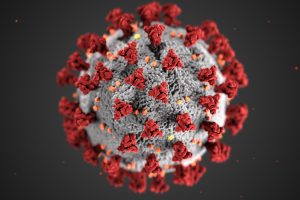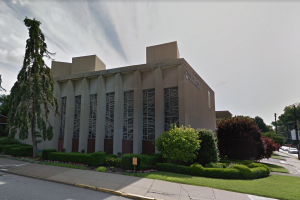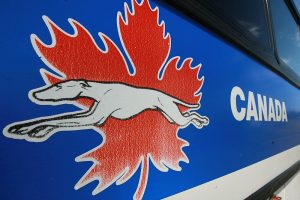At least one person has died and at least ten were injured after Syrian Rojava Peshmerga fired shots at a demonstration in the Yazidi town of Khanasor, near Sinjar, Iraq, on March 14.
several (i saw 2) civilians wounded as #kdp shoots at march at the front line against kdp's #treachery, as protesters called it. #singal
— Frederike Geerdink (@fgeerdink) March 14, 2017
ANF reports the dead woman has been named as Free Êzidî Women’s Movement (TAJÊ) assembly member Nazê Naif Qaval.
There are reports that up to five people may have been killed.
ANF reports that 15 people were injured including three who are in a critical condition, and that two journalists are among the injured.
What happened?
It is difficult to piece together precisely what happened given the divided loyalties of people on the ground.
Robin Ronî, a reporter for ANF, a Turkey-based pro-KCK media outlet, attended the demonstration, as did independent journalist Frederike Geerdink. Other media outlets reporting the events seem to be basing their reports on information from these reporters.
Khanasor is also known by its Kurdish name Xanasor, and Sinjar as Sengal.
protesters at front lines in #xanasor where mostly kurds and arabs from #hasake (rojava), in #sengal area to support #ybs.
— Frederike Geerdink (@fgeerdink) March 14, 2017
The demonstration against the Peshmerga presence in Khanasor started around 9am when people from the Sinjar area, Yazidis living in the Newroz refugee camp in Syria and Syrian Kurds gathered to march on Peshmerga positions, according to reports and confirmed by Matthew Barber who has spoken to people in Khanasor.
Images from the KDP forces' attack on civilians in Shengalhttps://t.co/hAuKnrQ9gx#TwitterKurds pic.twitter.com/epzo7mCshU
— Robin (@em_bernadin) March 14, 2017
Peshmerga blocked the path of the demonstrators with armoured vehicles, and when this did not stop the march they fired into the crowd, ANF reported.
In a statement, the KRG interior ministry said the PKK is responsible for the events of March 14, adding that ‘some’ riot police officers were injured, according to pro-KDP media outlet Kurdistan 24.
“PKK is planning on systematically creating tension and chaos in the region. They continue to provoke the KRG forces deployed in the area to trigger clashes,” the statement said, and that the PKK was using Yazidis as “machines to implement its plans.”
The Iraqi-Kurdistan-based pro-KDP media outlet Rudaw described the events as “clashes” and the woman who died as “pro-PKK”.
What’s the back-story?
Tensions between the YBŞ and its allies and KDP Peshmerga forces escalated earlier this month in Khanasor after Rojava Peshmerga moved into the area on March 2. Seven YBŞ, YJŞ and HPG members were killed and around 20 injured, and ANF claimed “dozens” of Rojava Peshmerga were killed in clashes which broke out on March 3. A ceasefire agreement was reached later that day.
Map: #Shingal military situation and forces. Full resolution: https://t.co/znQj25FBcX #Sinjar #ezidis #yezidis #yazidis pic.twitter.com/s6YRkUERoe
— le_carabinier (@LCarabinier) March 13, 2017
The Kurdistan Regional Government controlled by the KDP has repeatedly called for the PKK to leave the Sinjar area.
Prime Minister Nechirvan Barzani – nephew of Massoud Barzani, KRG’s president – said on March 13 that his government wants to rebuild Yezidi areas, but “the presence of the fighters of the Kurdistan Workers’ Party (PKK) in the region has become a problem that made the Kurdistan Regional Government unable to work seriously enough in this regard.”
Turkish president Recep Tayyip Erdogan has strongly suggested that Turkey will take military action in Sinjar if the PKK does not leave.“We will go on this campaign [Operation Euphrates Shield] in Syria and Iraq, and now in Kirkuk, Mosul, Tal Afar and Sinjar. Why? Sinjar is about to be the new Qandil [for the PKK],” Erdogan said October 27. “Thus, we cannot allow it to happen in Sinjar, because the PKK is there.”
The KRG and Turkey reached a deal in 2014 for Kurdistan’s oil to be exported to Turkey, and relations between the two governments have grown ever closer since.
Iraqi prime minister Haider al-Abadi discussed Sinjar and the presence of Turkish troops in Iraq with Turkish prime minister Binali Yildirim by telephone on March 14, Rudaw reported.
Abadi told Yildirim that Iraqi forces “in collaboration with the Peshmerga administer the Shingal situation,” adding that the Iraqi government will not allow any meddling in the region. He said that Turkey “should withdraw its troops in Iraq as this question is related to the sovereignty of Iraq.”

On March 13, Mark Toner, spokesperson for the US State Department, said the US was working to reduce tension in the area. “We understand the strains in relation to the PKK. We believe the PKK does not have a place there. We view the PKK as a terrorist organisation.”
PKK leader Murat Karayilan said on December 31 that the group had “informed the KRG that our fighters will soon complete their withdrawal from Sinjar,” but PKK and HPG members remain in the area.
Why are the PKK there?
Islamic State captured Sinjar on August 3, 2014. According to Brigadier General Holgard Heckmat, spokesman of the Ministry of Peshmerga Affairs, the Peshmerga defending the area simply “ran away”.
Yazidis fled to Mount Sinjar fearing they would be killed; over a few days around 50,000 people made their way to the mountains.
On August 7, US President Barack Obama ordered targeted airstrikes on IS militants and emergency air relief for the Yazidis. Airstrikes began on August 8.

On August 9, a force of Kurdish fighters from the Syrian YPG aided by some Turkish PKK fighters cleared a path between the mountain and areas of Syria controlled by the YPG. 10,000 people escaped the mountain on that day. Over the next few days, YPG and PKK fighters helped at least 35,000 people to escape into Syria, according to Salim Hassan, a spokesperson for the Yazidi people. Others estimate that 50,000 people fled to Syria.

The US declared the siege of Mount Sinjar over on August 13, although Salim Hassan estimated that between 5,000 and 10,000 people remained on Mount Sinjar after August 13, sustained by helicopter airdrops.
Reports of genocide and other crimes by IS fighters began to mount up. On August 15, according to reports of survivors interviewed by the UN, the entire male population of Khocho – up to 400 men – were rounded up and shot by IS. Up to 1,000 women and children were abducted. A UN report estimated that IS had killed up to 5,000 Yazidi men during August 2014.
On October 21, IS seized territory north of the mountains, cutting the area’s escape route to Kurdish areas.
Four months after abandoning the people to their fate, Peshmerga launched an offensive to liberate the Sinjar area backed by US-led coalition airstrikes on December 17. On December 19, the YPG joined the offensive, taking villages on both sides of the border and reopening the route to Syria. By December 21, parts of the mountain and villages around it were under the control of Kurdish fighters, but Sinjar city remained under IS control.

Almost a year later, on November 12, 2015, over 7,500 YBŞ, HPŞ, Peshmerga, YPG and PKK fighters launched an offensive to retake Sinjar city, backed by US-led coalition airstrikes. In just three days the Sinjar Alliance retook the city and made significant territorial gains around it.
The PKK has since maintained a presence in the area, refusing calls from the KRG to leave until the December 2016 statement.

A short who’s who
YBŞ/YJŞ
The YBŞ – Sinjar Resistance Units – and the all-female YJŞ are Yazidi militias aligned with the KCK, the wider Kurdish movement that includes the Turkish PKK, the Syria YPG and YPJ and other groups in Iran and Iraq.

Formed in 2007 to protect the Yazidi community in Iraq, the YBŞ shares the political ideology of the KCK, and YBŞ/YJŞ fighters are trained by the PKK and YPG.
Confusingly, both militias have renamed themselves to change the reference to Sinjar to Ezidkhan or Êzîdxan – the Land of the Yazidis. The original acronyms remain more common.
HPŞ
The Protection Force of Êzîdxan or HPŞ is a Yazidi militia founded by Haydar Shesho in 2014 in response to IS attacks on Yezidis.
To match the KCK-linked militias, the group changed its name to Hêza Parastina Êzîdxanê or HPÊ, and both acronyms are common.
On March 9, the HPŞ announced that it would join the Peshmerga and take orders from the President of the KRG, Massoud Barzani, and a brigade of 1,000 fighters is planned.
Rojava Peshmerga
The Rojava Peshmerga is considered the military wing of the Syrian National Council (ENKS), a coalition of six political parties dominated by the Syria KDP which is inextricably linked to the KRG-ruling Iraqi KDP and the Barzani family.
Based in Iraq, the Rojava Peshmerga comprises 3,000 to 5,000 fighters and is trained and controlled by the KDP Peshmerga.
The Rojava Peshmerga has been prevented from entering Syria by the PYD and YPG.
KDP Peshmerga
Kurdish Peshmerga forces in Iraq are divided between two political parties – the KDP of Massoud Barzani and the PUK led by Jalal Talabani. The PUK and its ally Gorran are more open to dialogue with parties aligned to the KCK.




